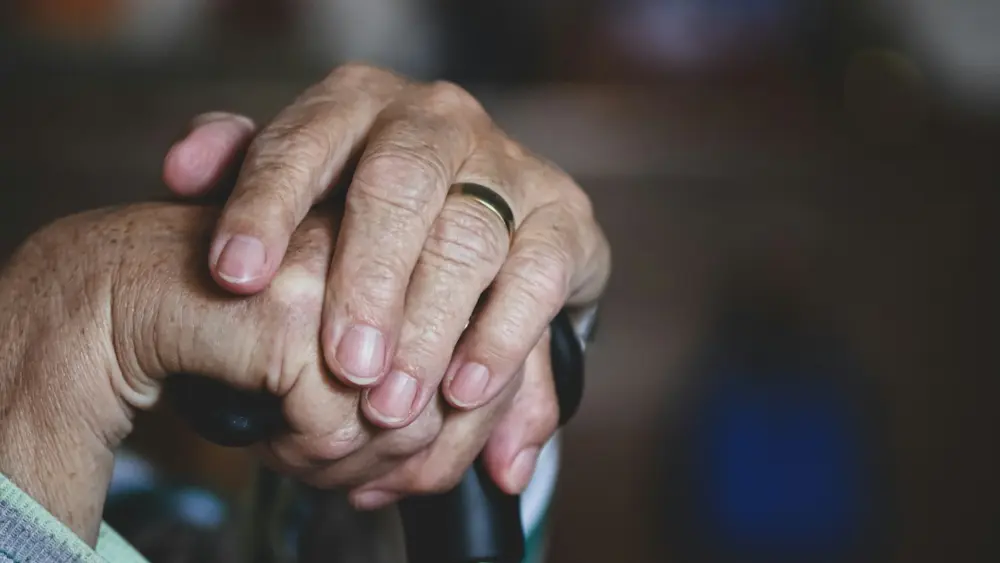By Scott Weybright, College of Agricultural, Human, and Natural Resource Sciences
During a competition at NASA’s Johnson Space Center, Stone Durán pitched a textile design that could reduce the prevalence of cancer for firefighters.
Durán, a graduate student in Washington State University’s Department of Apparel, Merchandising, Design and Textiles (AMDT), was part of a team competing in NASA’s Minority University Research and Education Project Innovation and Tech Transfer Idea Competition.
Competition rules stated that participants had to use existing NASA intellectual property in an innovative way that could be spun off into a new business idea. With that in mind, the team repurposed a NASA multi-layered fire protection system used in buildings and space shuttles to create a new design for firefighter jackets.
“Modern firefighter jackets are coated with fire retardant chemicals that are great at fire resistance,” Durán said. “But they are carcinogens and ‘forever chemicals’ that don’t break down. Firefighters are more likely to get cancer than they are to die in a fire.”
A native of El Paso, Texas, Durán was the creative director, design specialist, and lone textile expert on the team, which mostly included students from the University of Hawaii. Other team members came from a variety of majors and backgrounds, including engineering, game design, natural sciences, and business and marketing.
For the students from Hawaii, last summer’s deadly wildfires made developing a product that helps firefighters much more personal.
“We did a lot of research with Hawaiian firefighters,” Durán said. “We asked them what they wanted in a jacket and what would be practical. It’s much different from a consumer design; the primary goal is safety, not creativity. I had to consider the properties of the materials we used. Would they melt or release toxic fumes?”
Submitting their proposal for the first phase of competition, the team was one of 10 groups from roughly 300 initial entries to be selected for phase two. That entitled the group to a trip to Houston and the Johnson Space Center, where each team presented a “Shark Tank”-style product pitch. The four-day trip included tours of the space center, guest lectures about the business side of NASA, and practice time for the pitch.
While the team wasn’t one of the two chosen to advance to phase three, they were told that was largely because the market for firefighter jackets is relatively small.
Durán, who also earned a bachelor’s degree in design from WSU, joined the team on the recommendation of AMDT professor Hang Liu, who served as the group’s advisor and textile innovation mentor.
“Stone’s design background was a perfect fit for this team,” Liu said. “I’ve had him in three different courses, and he also worked on a research project for me that involved evaluating the performance of various textile products. This competition allowed him to apply what he’s learned at WSU to an important real-world situation.”
Durán said the students will continue refining their project. They are planning to re-enter the competition next year, taking the time to hone their proposal and potentially develop other uses for the fire-resistant materials and technology. The drive to create a successful design goes beyond self-interest and solving a problem. When it comes to fire, lives are at stake.
“These designs and products have to work because protecting firefighters is so important,” Durán said. “It’s nerve-wracking, but also a fun challenge. I can’t wait to get back to working on this again.”
Durán, a graduate student in Washington State University’s Department of Apparel, Merchandising, Design and Textiles (AMDT), was part of a team competing in NASA’s Minority University Research and Education Project Innovation and Tech Transfer Idea Competition.
Competition rules stated that participants had to use existing NASA intellectual property in an innovative way that could be spun off into a new business idea. With that in mind, the team repurposed a NASA multi-layered fire protection system used in buildings and space shuttles to create a new design for firefighter jackets.
“Modern firefighter jackets are coated with fire retardant chemicals that are great at fire resistance,” Durán said. “But they are carcinogens and ‘forever chemicals’ that don’t break down. Firefighters are more likely to get cancer than they are to die in a fire.”
A native of El Paso, Texas, Durán was the creative director, design specialist, and lone textile expert on the team, which mostly included students from the University of Hawaii. Other team members came from a variety of majors and backgrounds, including engineering, game design, natural sciences, and business and marketing.
For the students from Hawaii, last summer’s deadly wildfires made developing a product that helps firefighters much more personal.
“We did a lot of research with Hawaiian firefighters,” Durán said. “We asked them what they wanted in a jacket and what would be practical. It’s much different from a consumer design; the primary goal is safety, not creativity. I had to consider the properties of the materials we used. Would they melt or release toxic fumes?”
Submitting their proposal for the first phase of competition, the team was one of 10 groups from roughly 300 initial entries to be selected for phase two. That entitled the group to a trip to Houston and the Johnson Space Center, where each team presented a “Shark Tank”-style product pitch. The four-day trip included tours of the space center, guest lectures about the business side of NASA, and practice time for the pitch.
While the team wasn’t one of the two chosen to advance to phase three, they were told that was largely because the market for firefighter jackets is relatively small.
Durán, who also earned a bachelor’s degree in design from WSU, joined the team on the recommendation of AMDT professor Hang Liu, who served as the group’s advisor and textile innovation mentor.
“Stone’s design background was a perfect fit for this team,” Liu said. “I’ve had him in three different courses, and he also worked on a research project for me that involved evaluating the performance of various textile products. This competition allowed him to apply what he’s learned at WSU to an important real-world situation.”
Durán said the students will continue refining their project. They are planning to re-enter the competition next year, taking the time to hone their proposal and potentially develop other uses for the fire-resistant materials and technology. The drive to create a successful design goes beyond self-interest and solving a problem. When it comes to fire, lives are at stake.
“These designs and products have to work because protecting firefighters is so important,” Durán said. “It’s nerve-wracking, but also a fun challenge. I can’t wait to get back to working on this again.”




